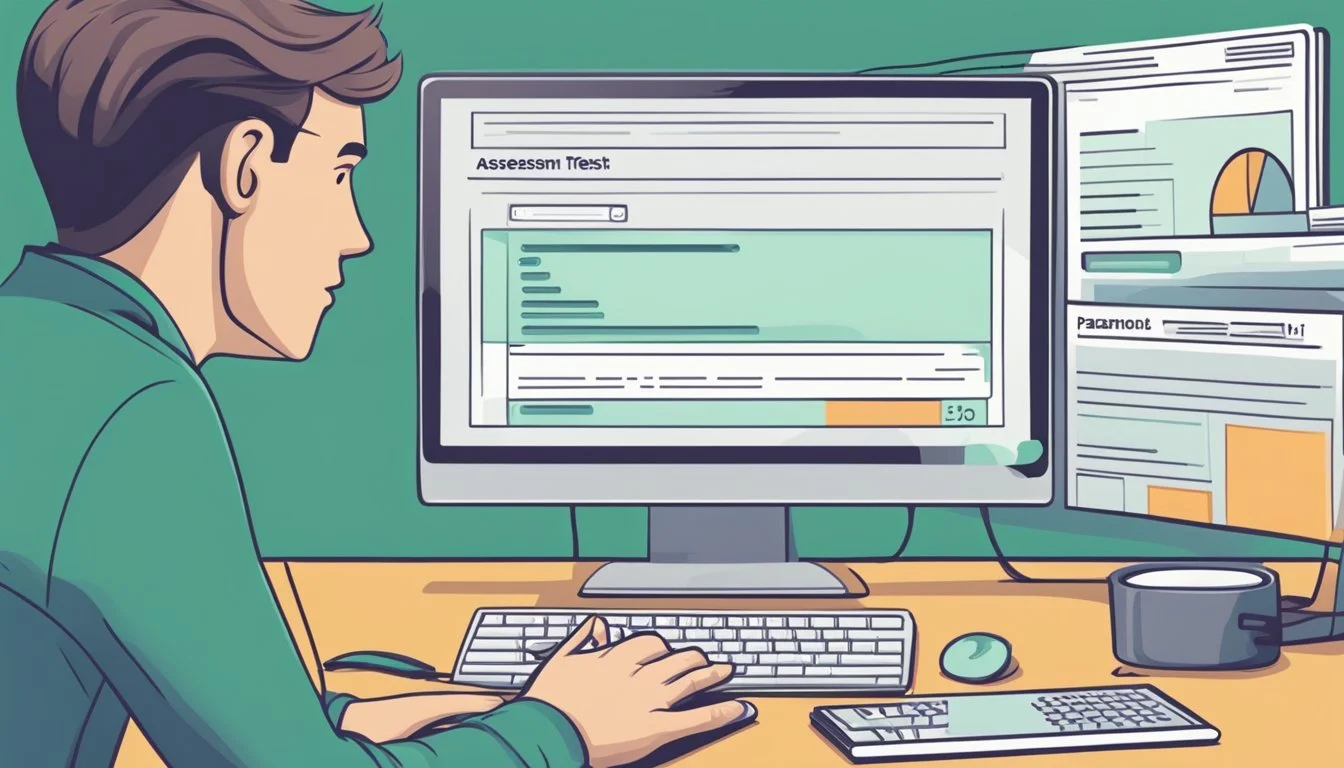Paranoia Assessment: Identify Symptoms and Find Professional Support
Paranoia tests offer individuals a way to assess their level of distrust and suspicion towards others. These online quizzes typically consist of a series of questions designed to evaluate various aspects of paranoid thinking and behavior. While not a substitute for professional diagnosis, these tests can provide insight into potential symptoms of paranoid personality disorder.
Online paranoia assessments measure traits such as excessive mistrust, suspiciousness, and tendency to interpret others' actions as threatening. Many of these tests are based on established psychological research and diagnostic criteria for paranoid disorders. They often cover multiple domains of paranoid thinking, including social anxiety, persecutory ideation, and suspicion of loved ones.
Taking a paranoia test can be a first step in understanding one's mental health and identifying potential areas of concern. It's important to note that experiencing some degree of suspicion or caution is normal, but persistent and intense paranoid thoughts may indicate an underlying issue. If an individual scores high on a paranoia test, they should consider consulting a mental health professional for a proper evaluation and guidance.
Understanding Paranoia
Paranoia involves persistent feelings of suspicion and distrust towards others, often without justification. It can range from mild, occasional thoughts to severe, debilitating beliefs that significantly impact daily life.
Definition and Spectrum
Paranoia is characterized by irrational thoughts and fears of being persecuted, harmed, or exploited by others. It exists on a spectrum, from mild suspicions to severe delusions.
Mild paranoia may involve occasional doubts about others' intentions. Moderate paranoia can lead to social withdrawal and heightened vigilance.
Severe paranoia often includes fixed, false beliefs that resist contrary evidence. These delusions can significantly impair functioning and relationships.
Differentiating Paranoia from Related Conditions
Paranoia can be a symptom of various mental health disorders, making accurate diagnosis crucial. It's important to distinguish paranoia from related conditions.
Anxiety disorders may cause excessive worry, but typically lack the intense suspicion of paranoia. Depression can involve negative thoughts, but usually not persecutory beliefs.
Schizophrenia and bipolar disorder can include paranoid delusions, but also feature other symptoms like hallucinations or mood swings.
Paranoid Personality Disorder
Paranoid Personality Disorder (PPD) is a chronic condition marked by pervasive distrust and suspicion of others. People with PPD often:
Suspect others of exploiting or harming them without evidence
Are reluctant to confide in others due to fear of information being used against them
Read hidden meanings into benign remarks or events
Bear grudges and are unforgiving of perceived insults
PPD typically begins in early adulthood and can significantly impact personal and professional relationships. Treatment often involves long-term psychotherapy to address underlying fears and build trust.
Signs and Symptoms of Paranoia
Paranoia manifests through a range of psychological and behavioral indicators. These signs can vary in intensity and frequency, impacting an individual's thoughts, relationships, and daily functioning.
Common Symptoms
Suspiciousness and mistrust form the core of paranoid thinking. Individuals may constantly feel on guard, believing others are trying to harm or deceive them. This heightened state of alertness often leads to hypervigilance.
Paranoid people frequently misinterpret neutral situations as threatening. They may perceive hidden meanings or threats in ordinary conversations or events. This distorted perception can result in unfounded accusations or beliefs about others' motives.
Reluctance to confide in others is common. Paranoid individuals often fear that shared information will be used against them. This guardedness can extend to close friends and family members.
Paranoia in Relationships
Paranoid thoughts significantly impact personal and professional relationships. Individuals may harbor unjustified doubts about their partner's fidelity or loyalty. They might constantly seek reassurance or evidence of faithfulness.
Grudge-holding is prevalent in paranoid individuals. They tend to interpret minor slights or unintentional oversights as deliberate insults. These perceived offenses are often remembered and revisited long after they occur.
Trust issues can lead to social isolation. Paranoid people may withdraw from social interactions to avoid perceived threats or betrayals. This isolation can further reinforce their paranoid beliefs.
Impact on Character and Behavior
Paranoia often manifests in defensive or argumentative behavior. When confronted with perceived criticism, individuals may react with hostility or excessive defensiveness. This can create a cycle of conflict in their interactions.
Rigid thinking patterns are common. Paranoid individuals may have difficulty considering alternative viewpoints or accepting evidence that contradicts their beliefs. This inflexibility can hinder problem-solving and decision-making.
Hypersensitivity to criticism is a hallmark trait. Even constructive feedback may be perceived as an attack, leading to emotional reactions disproportionate to the situation. This sensitivity can make it challenging for others to communicate openly with the paranoid individual.
Diagnostic Criteria and Paranoia Tests
Paranoia tests and diagnostic criteria help identify symptoms of paranoid thoughts and behaviors. Mental health professionals use standardized tools to assess the severity and impact of paranoid tendencies.
DSM-5 Criteria
The Diagnostic and Statistical Manual of Mental Disorders, Fifth Edition (DSM-5) outlines specific criteria for paranoid personality disorder. A diagnosis requires persistent distrust and suspicion of others, with at least four of the following:
Suspecting others of exploiting, harming, or deceiving them
Doubting loyalty or trustworthiness of friends or associates
Reluctance to confide in others due to fear of information being used against them
Reading hidden meanings into benign remarks or events
Holding grudges
Perceiving attacks on character or reputation that others don't see
Having recurrent suspicions about fidelity of spouse or partner
These symptoms must cause significant impairment in social or occupational functioning.
When to Seek a Professional Assessment
Seeking professional help is crucial if paranoid thoughts interfere with daily life. Signs indicating the need for assessment include:
Persistent suspicion of others' motives
Difficulty maintaining relationships due to mistrust
Frequent conflicts at work or in personal life
Feeling constantly threatened or in danger
Isolating oneself due to fear or suspicion
A qualified mental health professional can provide an accurate diagnosis and appropriate treatment plan.
Identifying Reliable Tests
Reliable paranoia tests are standardized and validated by mental health experts. Some commonly used assessments include:
Paranoia Scale (PS)
Green Paranoid Thoughts Scale (GPTS)
Paranoid Thoughts Scale (PTS)
These tests measure frequency and intensity of paranoid thoughts. They typically involve self-report questionnaires or structured interviews. It's important to note that online self-assessments can be helpful but should not replace professional evaluation.
Mental health professionals may use multiple assessment tools to ensure accuracy. They consider test results alongside clinical interviews and observed behaviors for a comprehensive diagnosis.
Self-Assessment and Online Resources
Self-assessment tools and online resources provide individuals with accessible ways to explore potential paranoid tendencies. These options range from simple quizzes to more comprehensive evaluations based on established psychological criteria.
Using Self-Assessment Tools
Self-assessment tools for paranoia typically involve answering a series of questions about thoughts, feelings, and behaviors. These questionnaires often focus on themes like suspicion, mistrust of others, and tendency to interpret neutral situations as threatening. Users rate the frequency or intensity of these experiences.
Many tools use Likert scales, allowing respondents to indicate agreement levels with statements like "I often feel people are trying to take advantage of me." Some assessments include scenario-based questions to gauge reactions to hypothetical social situations.
Results usually provide a score or range indicating the likelihood of paranoid traits. It's crucial to approach these tools as starting points for self-reflection rather than definitive diagnoses.
Availability of Free Online Tests and Quizzes
Numerous websites offer free paranoia-related assessments. Mind Help provides a paranoia test and a separate quiz for paranoid personality disorder. Psych Central features a paranoid personality disorder quiz aimed at determining if professional evaluation might be beneficial.
IDRlabs offers a Paranoid Personality Spectrum Test based on established clinical inventories. These tests typically take 5-15 minutes to complete and provide immediate results.
Some sites require email registration or account creation to access full results. Others display scores instantly without any sign-up process. It's important to review privacy policies before sharing personal information on these platforms.
Credibility and Limitations of Online Tools
While online paranoia tests can be informative, they have significant limitations. These tools are not substitutes for professional diagnosis or treatment. Most reputable sites include disclaimers stating their assessments are for educational purposes only.
The accuracy of online tests varies. Some are developed by mental health professionals or based on clinical criteria, while others lack scientific validation. IDRlabs mentions their test is inspired by a "famous and well-regarded inventory" but doesn't specify which one.
Online assessments can't account for individual context or nuanced symptoms. They may oversimplify complex psychological concepts. Users should approach results cautiously and consult mental health professionals for comprehensive evaluations if concerned about paranoid tendencies.
Dealing with Paranoia
Effective management of paranoia involves a combination of professional treatment and self-help strategies. Various approaches can help reduce symptoms and improve quality of life for those experiencing paranoid thoughts.
Treatment Options
Professional treatment for paranoia typically involves a combination of therapy and medication. A psychiatrist or psychologist can assess the severity of symptoms and develop an appropriate treatment plan. Cognitive behavioral therapy (CBT) is often recommended to help identify and challenge paranoid thoughts. Other evidence-based therapies like dialectical behavior therapy (DBT) may also be beneficial.
In some cases, hospitalization may be necessary if paranoia becomes severe or poses a safety risk. Support groups can provide a valuable space for individuals to share experiences and coping strategies with others facing similar challenges.
The Role of Medication
Antipsychotic medications are commonly prescribed to manage paranoid symptoms. These drugs work by altering brain chemistry to reduce delusions and hallucinations. First-generation antipsychotics like haloperidol and second-generation options such as risperidone or olanzapine may be used.
Doctors carefully monitor medication effectiveness and side effects. Dosages may need adjustment over time. Antidepressants or anti-anxiety medications might also be prescribed if depression or anxiety coexist with paranoia.
It's crucial for patients to follow their prescribed medication regimen and communicate any concerns to their healthcare provider.
Psychotherapy and Support
Psychotherapy plays a vital role in treating paranoia. Cognitive behavioral therapy helps individuals identify negative thought patterns and develop healthier perspectives. Therapists may use techniques like reality testing to challenge paranoid beliefs.
Family therapy can educate loved ones about paranoia and improve communication. Group therapy offers peer support and the opportunity to practice social skills in a safe environment.
Building a strong therapeutic alliance is essential. Therapists work to create a trusting relationship, helping clients feel safe enough to explore their paranoid thoughts without judgment.
Self-Care and Management
Self-care strategies can complement professional treatment for paranoia. Establishing a consistent sleep schedule and maintaining a balanced diet support overall mental health. Regular exercise can reduce stress and improve mood.
Stress management techniques like deep breathing, meditation, or yoga may help calm anxious thoughts. Keeping a journal can aid in tracking symptoms and identifying triggers.
Limiting alcohol and avoiding recreational drugs is important, as substance use can exacerbate paranoid thinking. Building a support network of trusted friends and family members provides crucial emotional backing during difficult times.
Learning to recognize early warning signs of increased paranoia allows for prompt intervention and prevents escalation of symptoms.
Scientific and Clinical Research
Scientific studies on paranoia have expanded our understanding of its causes, assessment methods, and potential treatments. Researchers have conducted experiments with both clinical and non-clinical populations to examine paranoid thoughts across the spectrum of severity.
Key Studies and Findings
Researchers have investigated interpretation biases in paranoia. Studies found that individuals with paranoid thinking tend to perceive greater criminal and hostile intent in ambiguous situations. This pattern was observed in both clinical and non-clinical samples.
The hierarchical model of paranoia proposes that paranoid thoughts exist on a continuum in the general population. This model has been supported by research using self-report measures validated for use with non-clinical groups.
Experimental studies have compared paranoia and anxiety. Results indicate similarities in how both involve heightened perceptions of threat, but differences in the specific focus of fears.
Research Institutions and Publications
Leading research on paranoia takes place at institutions like King's College London and the University of Oxford. Their work often appears in respected journals such as the British Journal of Clinical Psychology and Clinical Psychological Science.
Key publications include systematic reviews of paranoia assessment tools. These reviews evaluate the validity and reliability of different paranoia inventories and questionnaires used in clinical and research settings.
Ongoing research aims to develop more accurate assessments and effective treatments for paranoia. This includes exploring digital technologies to enhance psychological interventions for paranoid thoughts.
Legal and Ethical Considerations
Administering paranoia tests requires careful attention to legal and ethical standards. Mental health professionals must balance diagnostic needs with patient rights and confidentiality concerns.
Use of Psychological Instruments
Paranoia tests must meet strict criteria for validity and reliability. Only qualified mental health professionals should administer and interpret these instruments. Improper use can lead to misdiagnosis or legal consequences.
Test results should inform treatment plans but not be the sole basis for decisions. Professionals must consider cultural factors that may influence responses. Regular training ensures proper test administration and interpretation.
Patients have the right to refuse testing. Informed consent is essential before proceeding. Clear explanations of the purpose, process, and potential outcomes help build trust.
Confidentiality and Trust
Maintaining patient confidentiality is paramount when conducting paranoia tests. Mental health professionals must safeguard test results and related information.
There are limits to confidentiality. Professionals may need to break confidence if a patient poses a threat to themselves or others. Clearly explaining these limits upfront helps establish trust.
Patients must feel safe to confide honestly during testing. Creating a non-judgmental environment encourages openness. Professionals should address any concerns about privacy or data security.
Breaching confidentiality can damage the therapeutic relationship and the professional's reputation. It may also have legal ramifications if not properly justified.



